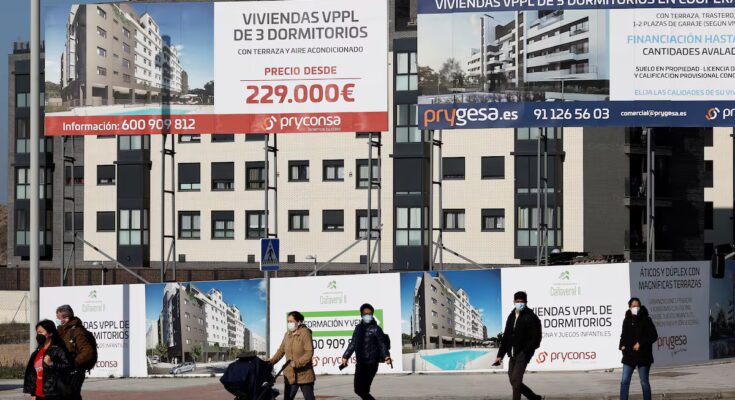Cranes and scaffolding have become the daily spectacle of urban landscapes, and despite this the real estate crisis in Spain does not provide respite. At the current growth rate, the number of new buildings could finally match the increase in population starting next year, according to Funcas forecasts which show some vitality in the expansionary cycle of residential investment.
If this prediction came true, the housing deficit would not worsen. Good news which must however take into account the duality that characterizes the real estate market. Because the shortage significantly affects access to housing by the resident population, while non-residents seem immune, at least for the moment, from high prices. It is a fact that foreigners who do not live in Spain are driving the current cycle of real estate inflation: the average price of homes purchased by this group has increased by 40% compared to the pre-pandemic period, compared to 27% in the case of resident buyers, be they Spanish or immigrants (with data from the portal of the General Council of Notaries).

Although foreign buyers continue to be a minority, with a weight of 7.5% of the total transactions, their influence on price formation is significant, as they are private individuals or companies who often enjoy high purchasing power compared to locals. As proof of this, the average purchase price is 73% higher than that of resident buyers. This phenomenon has also occurred in other countries, motivating in some cases the imposition of limitations on purchases by non-residents: in Denmark, for example, such operations are subject to a five-year residency criterion.
The push of international demand explains why the market has moved away from the purchasing capacity of the Spanish middle classes. Today the average purchase price of a home is equivalent to 7.7 years of annual disposable income for resident families, one year more than in the pre-pandemic period. Given the prudential rules for obtaining a mortgage, national demand continues to shift towards the rental segment, the price of which is also becoming more expensive, exacerbating citizens’ concerns.
Hence the importance of prioritizing the construction of affordable housing, which is of great importance for a Spanish economy heavily dependent on the incorporation of the workforce. The foreign population is starting to slow its growth: the number of immigrants is increasing at a quarterly rate close to 1% this year, compared to 1.3% in 2024 and 1.7% in 2023. And the working population, one of the main drivers of expansion, is also moderating in light of the weak third quarter performance. Regarding labor mobility, available indicators dating back to 2023 point to a decline compared to the period before the pandemic.
In theory, some activities could be relocated from stressed areas to areas less affected by housing shortages. But in practice it is difficult for something like this to happen due to the advantages of the ecosystem that characterizes large cities and the fixed costs of a new implementation, at a time of uncertainty for business investments. In any case, the experience of other countries with a chronic housing deficit, such as the United Kingdom, shows that companies are unlikely to relocate their operations on a large scale.
In short, looking to the future we will need to pay attention to the composition of the real estate supply and the duality of the demand for housing, beyond the large numbers. Meanwhile, the real estate crisis is hitting the resident population, undermining the demographic shock, one of the foundations of the good times of the Spanish economy.
Immigration
The number of active foreigners or those with dual nationality rose to 5.6 million people in the third quarter of this year, which is 1.9 million more than in the same period in 2019 (with data published by the Active Population Survey). Today immigration contributes 22% to total activities, or five points more than five years ago. Despite this, the incorporation of immigrants is slowing down somewhat, as the active foreign population has increased by only 6.9% so far this year, compared to 8.2% last year and 9% in 2023.



